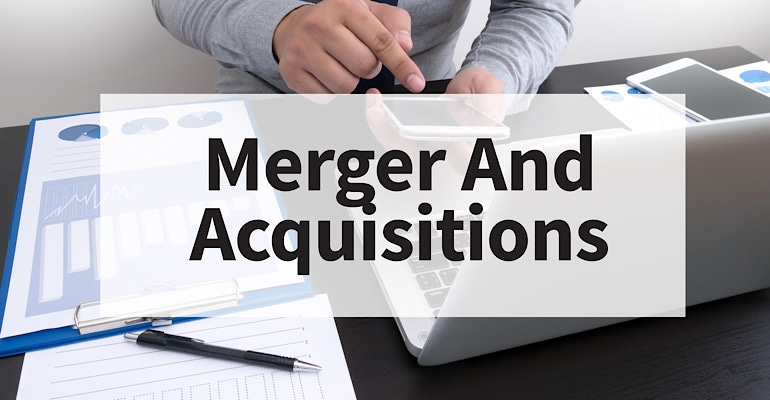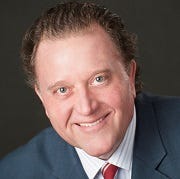Your company has been acquired, now what? How to successfully integrate staff post-merger.
December 13, 2022

Successful M&As don’t succeed by leadership vision alone. They require clear and concise goals executed by a focused and purposeful workforce. Actually, two workforces. And with an M&A, there is the added pressure of everyone meeting on the bandstand with a room full of stakeholders expecting them to perform in tandem.
It’s long been understood by medical device manufacturing companies that acquiring an existing service or innovative new product line is preferred to reinventing the wheel. In fact, this year, the global medical device market size was estimated at nearly $496 billion. By 2029 it is expected to reach $719 billion, an average growth rate of 5.5% per year. But even when the numbers work on paper, M&A success will be in the ability of the C-Suite to bridge and build synchronicity across the two workforces while maintaining performance. To accomplish this, MDDI executives must be proactive and prepare with a focused plan.
Similar to the process of development in medical device innovation that moves from design to prototype to testing to production to delivery – a successful M&A workforce integration will require following a step-by-step approach from due diligence to closing and throughout the first 100 days.
Here are five steps to take to maximize your integration outcome.
Communicate how everyone will get paid. From the moment the M&A is announced, there should be clarity on delivery of the next paycheck. If there is no change in process or schedule, say that loudly and clearly. If there is any change, no matter how minor, say that loudly and clearly. If there is a required action by the employees, say that loudly and clearly, and more than twice. M&As can be an overwhelming concept for both workforces and anxiety around getting paid should always be alleviated. All updates to payment schedules should be communicated verbally, in writing, and often.
Know the M&A purpose. The reason for the merger will determine what is to come in much of the integration groundwork. If the buyer is expanding their existing operations by obtaining a maker of similar medical devices, then managers can expect lots of overlapping skill-sets across the two teams. However, if the goal is to diversify by adding a new product line or service, the two groups will likely have different sets of expertise with minimal managerial redundancy. With that being said, nearly all M&A deals will lead to some layoffs of duplicate positions or departments. Keep in mind that even when the employees offered severance or exit packages feel satisfied, these departures may still have an impact on others and these emotions need to be addressed through one-on-one or group conversations. The goal is to build confidence in the deal that will keep both morale and performance high.
Take the time to learn how things are done. Executives must communicate how valued both workforces are by recalling the truth of the old saying that companies are only as good as their people. Your C-suite will need to remember that too because it was these people who established the existing guidelines and policies. That is why it is imperative to take the time to review internal and external procedures from employee vacation schedules to vendor procurement processes. No one has a monopoly on good ideas which is why leaders from both companies should be tasked with listening, learning and bringing an open mind concerning potential new ways of running operations.
Mesh multi-generational workers. Many workforces, medical devices included, are a mix of senior and junior workers. Both sides of the M&A deal will have long-serving professionals who have decades of experience along with staffers at the beginning of their careers. When it comes to the medical device lifecycle of product design, prototype, testing, production, marketability, and distribution, every generation has valuable contributions to make. The key in this stage of the M&A integration is to acknowledge this while recognizing that communication styles and ways of doing business will vary for each group, mostly due to the role of technology. Bring departments together for an idea exchange and hold team-building exercises to showcase the strengths and value of each generation with the goal of mutual respect and joint innovation.
Culture comes in many shapes and sizes. Dress code, office hours, same day replies, and in-person vs. virtual meetings are cultural vs. generational issues. That is because workers in the same age demographic may hold very different sensibilities on the appropriateness of these behaviors and actions. For medical device executives to be successful in this aspect of the M&A, they must fully examine their own culture and how similar (or opposite) it is from the newly acquired business. Deploying a Cultural Assessment Survey can be a useful and effective way to truly distinguish your cultural blueprint from the other company. If the results of the survey show a large disparity between the two workforce cultures, consider adding programs that will bring people together like departmental rewards and team building. Most importantly, be prepared to compromise as long as brand integrity and standards are upheld.
Ultimately, when bringing two companies together, workforce integration needs to be understood for what it is and represents. Rather than being the final step in a finished deal – it is the first step in creating a new company. And success is critical because if the two workforces aren’t positioned to operate as one, the entire M&A is vulnerable to failure. Move forward by identifying and adopting a shared-methods structure in which the best practices from each are accepted and agreed to by leaders at both companies. Good luck!
About the Author(s)
You May Also Like




